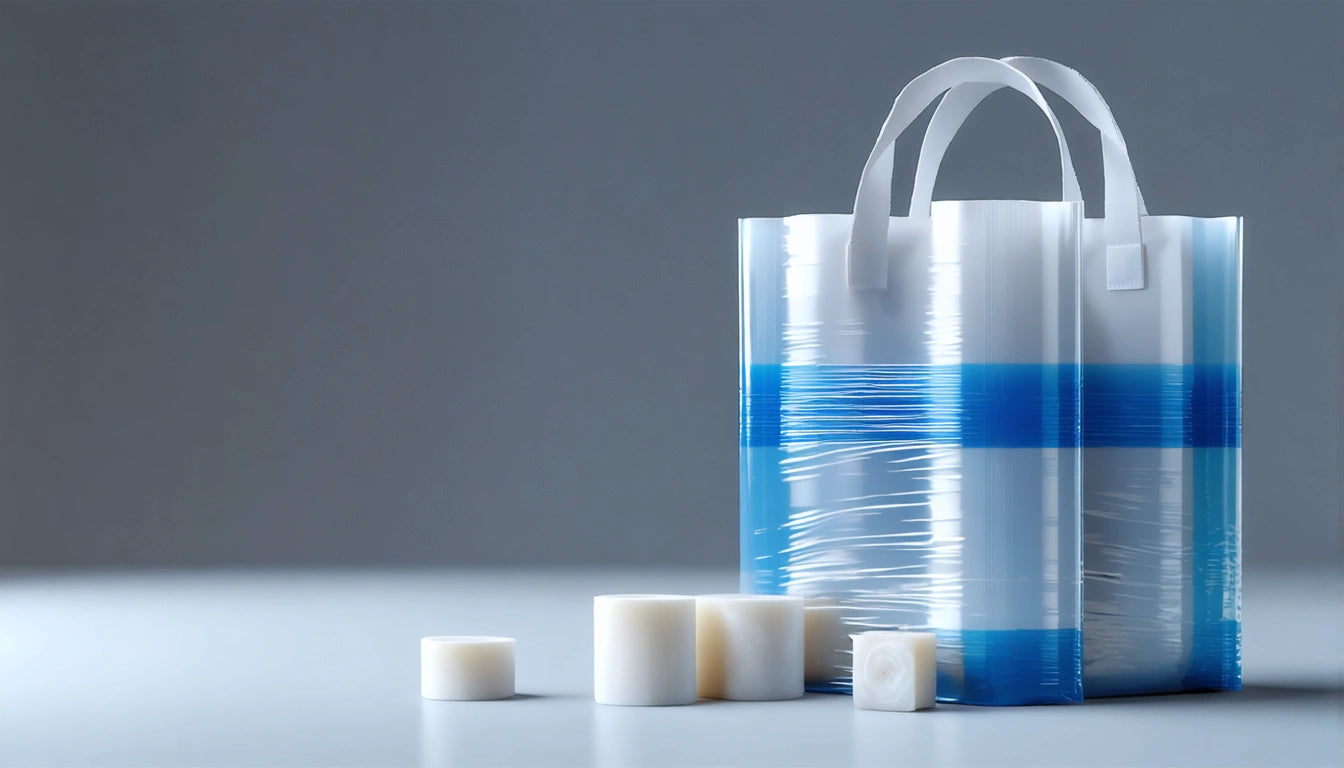Table of Contents
- Polyolefin Shrink Wrap Basics: Properties and Applications
- Understanding Thickness Measurements: What Does 5mil Mean?
- Thickness Options Explained: From 45 Gauge to 150 Gauge
- Choosing the Right Thickness for Different Merchandise
- Packaging Recommendations: Matching Product Requirements with Ideal Thickness
Understanding Polyolefin Shrink Wrap: Choosing the Right Thickness for Your Merchandise
Selecting the appropriate polyolefin shrink wrap thickness is crucial for protecting products while maintaining visual appeal. Whether you're packaging delicate items or heavier merchandise, understanding how thick your polyolefin shrink wrap should be can make the difference between professional presentation and packaging failure.
Polyolefin Shrink Wrap Basics: Properties and Applications
Polyolefin shrink film stands out as a versatile packaging solution known for its clarity, strength, and ability to conform tightly to various product shapes. Unlike PVC films, polyolefin offers superior clarity without yellowing over time and provides excellent tear resistance.
This material is particularly valued in industries requiring high presentation standards and product visibility. Understanding shrink wrap materials is essential before determining the ideal thickness for your application.
Key properties of polyolefin shrink wrap include:
- Superior clarity and gloss
- Excellent tear resistance
- Good puncture resistance
- FDA-approved for food contact
- Low temperature shrinking capability
- No harmful emissions during heat shrinking
Understanding Thickness Measurements: What Does 5mil Mean?
When exploring polyolefin options, you'll encounter terms like "5mil thickness" or "75 gauge." These measurements can be confusing without proper context.
A mil is a unit of measurement equal to one-thousandth of an inch (0.001 inches). Therefore, a 5mil polyolefin film is 0.005 inches thick. Gauge is another common measurement, with 100 gauge approximately equivalent to 1mil. Our guide to measuring in inches provides more context on these small but critical measurements.
Common thickness conversions:
- 45 gauge = 0.45mil = 0.00045 inches
- 60 gauge = 0.6mil = 0.0006 inches
- 75 gauge = 0.75mil = 0.00075 inches
- 100 gauge = 1mil = 0.001 inches
- 150 gauge = 1.5mil = 0.0015 inches
Thickness Options Explained: From 45 Gauge to 150 Gauge
Different thickness options serve specific packaging needs. Understanding these variations helps in making informed decisions for your merchandise.
45-60 Gauge (0.45-0.6mil)
This lightweight option is ideal for:
- Small, lightweight items
- Products with minimal sharp edges
- Applications where maximum clarity is essential
- Cost-sensitive packaging needs
75-100 Gauge (0.75-1mil)
The mid-range thickness provides a balance of properties:
- Medium-weight products
- Items with some corners or edges
- Applications requiring good durability without sacrificing clarity
- Most retail consumer goods
125-150 Gauge (1.25-1.5mil)
Heavyweight options offer maximum protection:
- Heavier products
- Items with sharp corners or edges
- Applications where durability is more important than conformability
- Products that may experience rough handling
When packaging premium products like cannabis, many businesses opt for thicker protective materials similar to those used for high-quality storage solutions like pound-capacity mylar bags which offer excellent barrier properties while maintaining product freshness.
Choosing the Right Thickness for Different Merchandise
How thick should merchandise polyolefin be? The answer depends on several factors:
Product Weight and Shape
Heavier products generally require thicker films (100 gauge or higher). Similarly, items with sharp edges need thicker materials to prevent punctures. Understanding product dimensions helps determine appropriate thickness needs.
Handling Requirements
Consider how your product will be handled during shipping and display:
- Minimal handling: 45-60 gauge may suffice
- Standard retail handling: 75-100 gauge recommended
- Frequent or rough handling: 125-150 gauge advised
Visual Requirements
Thinner films (45-75 gauge) offer superior clarity and conformability, making them ideal for products where visual presentation is paramount. However, this must be balanced against protection needs.
Cost Considerations
Thicker films cost more per square foot, but may reduce damage rates. Evaluate the total cost impact rather than just material costs. Understanding cost factors helps optimize packaging expenses.
Packaging Recommendations: Matching Product Requirements with Ideal Thickness
Based on industry standards and product requirements, here are specific recommendations for polyolefin shrink wrap thickness:
- Books, DVDs, and flat items: 60-75 gauge provides adequate protection while maintaining a tight, professional appearance.
- Boxed products and standard retail items: 75-100 gauge offers a good balance of protection and presentation.
- Multi-packs and bundled items: 100-125 gauge prevents tearing when handling multiple items together.
- Products with sharp corners: 125-150 gauge resists punctures from edges and corners.
- Food products: 75-100 gauge FDA-approved film provides protection while showcasing contents.
When measuring small quantities or determining exact thickness needs, resources like visualizing small measurements can be helpful for conceptualizing these minute differences.
For specialty applications like cannabis packaging, where product preservation is crucial, understanding the relationship between thickness and barrier properties becomes even more important, similar to how polyethylene and other plastics perform in various packaging scenarios.
The right thickness choice ultimately balances protection, presentation, and cost-effectiveness while ensuring your merchandise arrives to customers in perfect condition. By understanding what different thickness measurements mean and how they relate to your specific packaging needs, you can make informed decisions that enhance your product's appeal while providing necessary protection.











Leave a comment
All comments are moderated before being published.
This site is protected by hCaptcha and the hCaptcha Privacy Policy and Terms of Service apply.